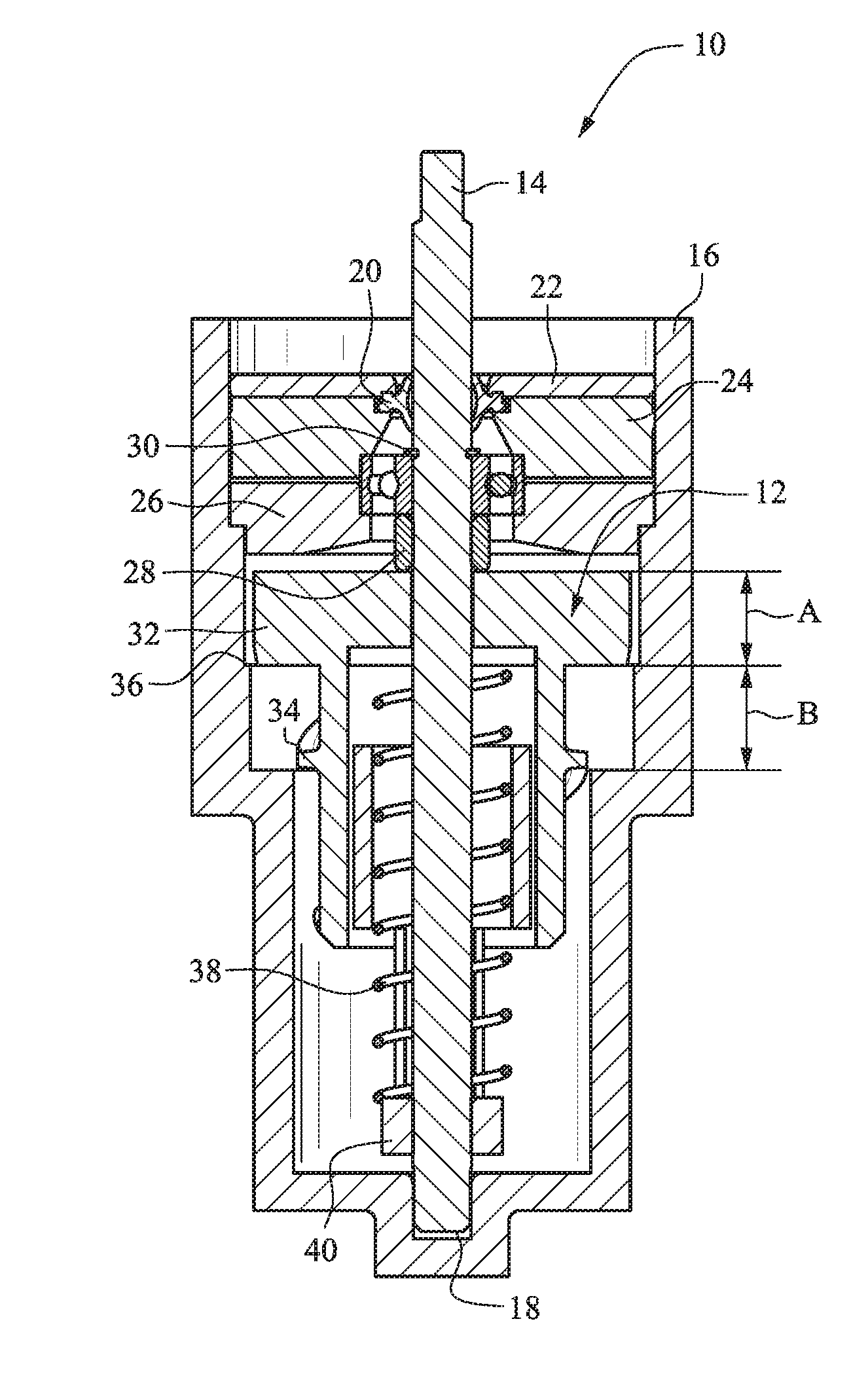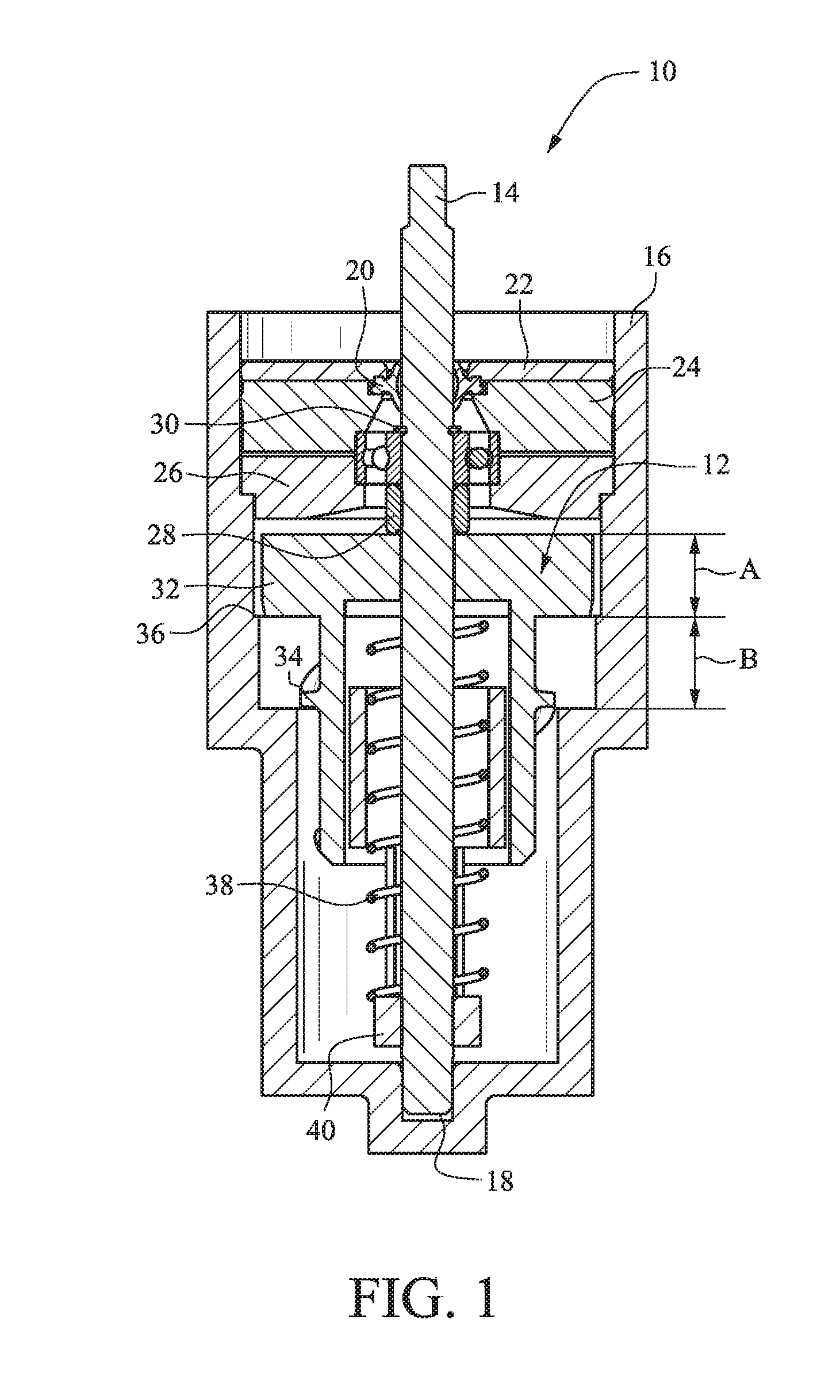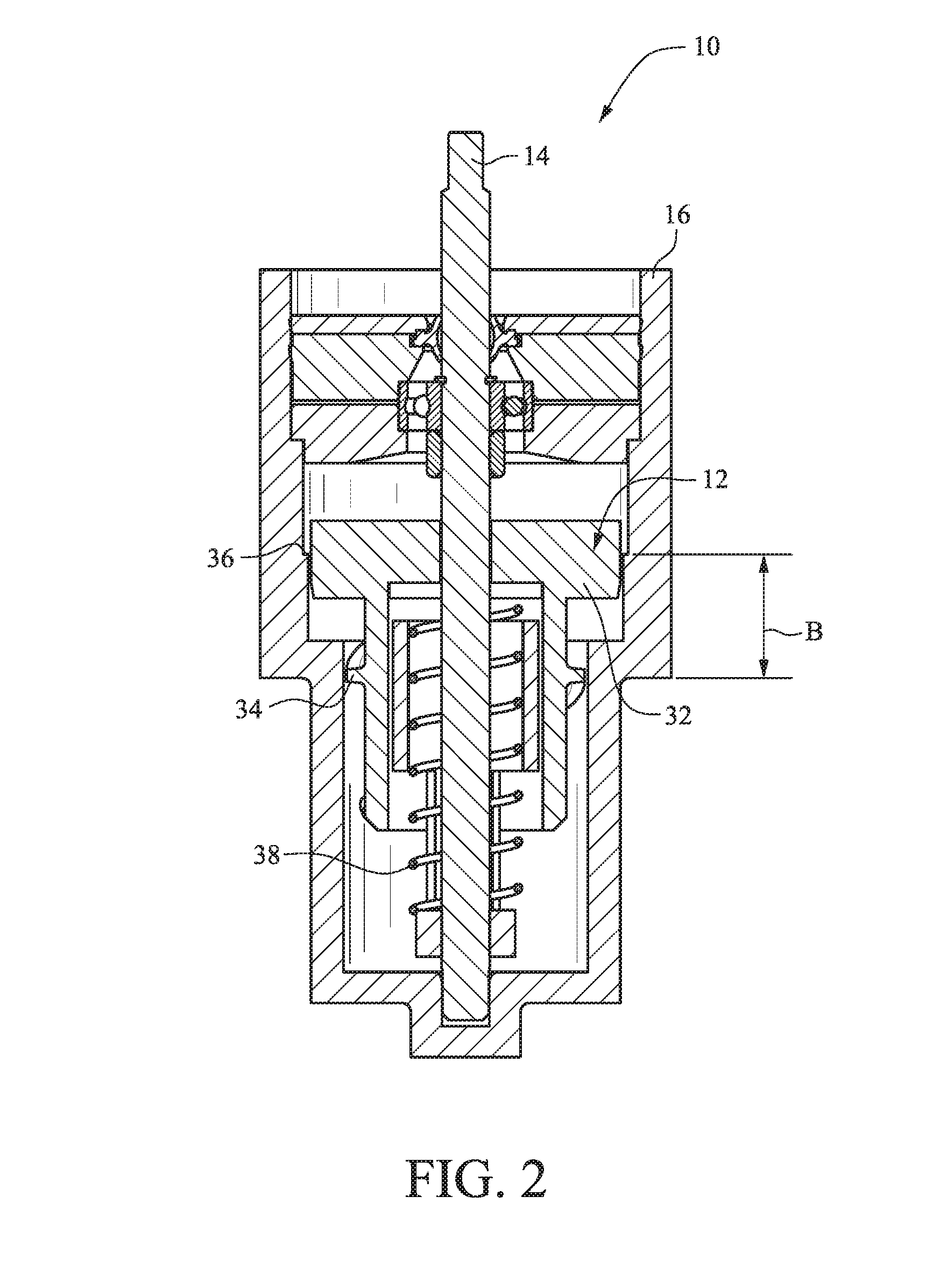Viscous rotational speed control device
a technology of rotating speed control and viscous, which is applied in the direction of watering devices, mechanical equipment, horticulture, etc., can solve the problems of excessive seal friction, water intrusion and/or excessive wear, and seal wear excess friction
- Summary
- Abstract
- Description
- Claims
- Application Information
AI Technical Summary
Benefits of technology
Problems solved by technology
Method used
Image
Examples
Embodiment Construction
[0051]The figures show several embodiments of a viscous rotational speed control device 10. With reference to FIG. 1, a rotor 12 is rotatable with a shaft 14 in a housing 16. The deflector plate 15 is secured to the shaft 14 for rotation with the shaft 14. (See, e.g., FIG. 15.) The housing 16 is filled with a viscous fluid such as high-viscosity silicone fluid or the like. The housing 16 is closed at a bottom end and includes a recess or channel 18 for receiving the shaft 14. A seal 20 secured with a seal retainer 22 contains the viscous fluid within the housing 16.
[0052]A retaining ring 30 and a bearing retainer 28 are used to axially locate the ball bearing on the shaft 14. A lower bearing support 26 and an upper bearing support 24 cooperate to axially and radially locate the shaft bearing assembly in the housing 16. FIGS. 1-10 and 13 utilize a ball bearing to support the axial and radial load that the water imparts on the shaft 14. The axial load is transmitted to the housing 16 ...
PUM
 Login to View More
Login to View More Abstract
Description
Claims
Application Information
 Login to View More
Login to View More - R&D
- Intellectual Property
- Life Sciences
- Materials
- Tech Scout
- Unparalleled Data Quality
- Higher Quality Content
- 60% Fewer Hallucinations
Browse by: Latest US Patents, China's latest patents, Technical Efficacy Thesaurus, Application Domain, Technology Topic, Popular Technical Reports.
© 2025 PatSnap. All rights reserved.Legal|Privacy policy|Modern Slavery Act Transparency Statement|Sitemap|About US| Contact US: help@patsnap.com



